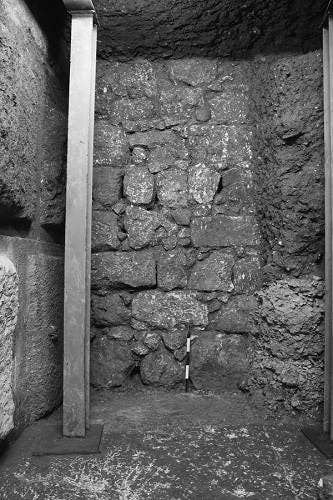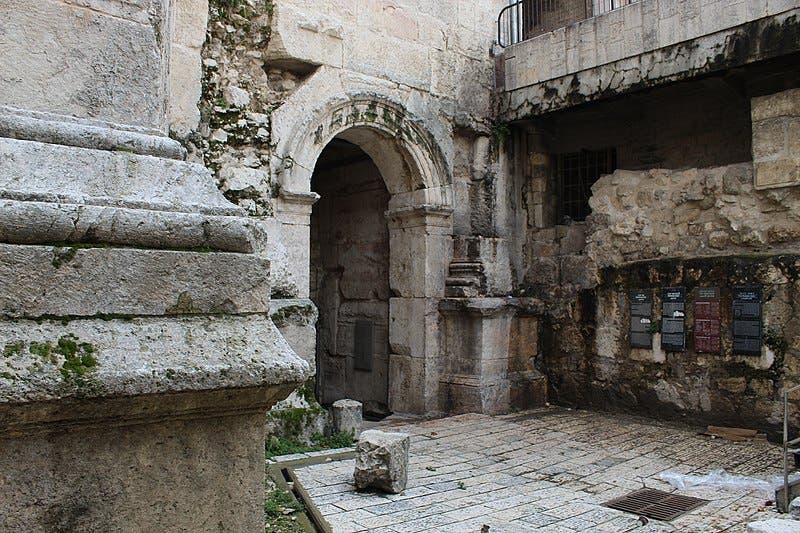The street extends from the Pool of Siloam in the south to the Temple Mount — two monuments that have a major importance in Christianity and Judaism. There are good reasons to believe that the street was built by Pontius Pilate, the officer believed to have presided over the trial and crucifixion of Jesus.

Separating history from religion is sometimes difficult, but the street uncovered by archaeologists is very much real. After six years of digging, researchers from the Israel Antiquities Authority and Tel Aviv University have uncovered a 220-meter-long section of an ancient street. The street was first discovered by British archaeologists in 1894, but managing such a long dig in an urban area proved to be extremely problematic.
Overall, the street is 600 meters long and 8 meters wide — an impressive and large construction paved with large stone slabs, as was often the case in the Roman Empire. The construction of the street required significant resources and skill.
The excavations also revealed 100 coins under the paving stones. The coins are dated to 17 to 31 CE, which suggests that the street was completed during the time Pontius Pilate governed Judea.
“Dating using coins is very exact,” says Dr Donald T. Ariel, an archaeologist and coin expert with the Israel Antiquities Authority, and one of the co-authors of the article. “As some coins have the year in which they were minted on them, what that means is that if a coin with the date 30 CE on it is found beneath the street, the street had to be built in the same year or after that coin had been minted, so any time after 30 CE.”
“However, our study goes further, because statistically, coins minted some 10 years later are the most common coins in Jerusalem, so not having them beneath the street means the street was built before their appearance, in other words only in the time of Pilate.”

The fact that the street was so large and lavish is also intriguing. The street starts at Temple Mount, located within the Old City of Jerusalem, which has been venerated as a holy site for thousands of years. It ends at Siloam Pool, where it is said that Jesus cured a man of blindness by having him wash in the pool water.
The street was probably ceremonial in nature, and was used by pilgrims.
“If this was a simple walkway connecting point A to point B, there would be no need to build such a grand street,” says Dr Joe Uziel and Moran Hagbi, archaeologists at the Israel Antiquities Authority, co-authors of the study. “At its minimum it is 8 meters wide. This, coupled with its finely carved stone and ornate ’furnishings’ like a stepped podium along the street, all indicate that this was a special street.”

However, the street might not be entirely religious in nature. Another hypothesis is that it was a project to show he local population the strength and grandeur of the Roman Empire.
“Part of it may have been to appease the residents of Jerusalem, part of it may have been about the way Jerusalem would fit in the Roman world, and part of it may have been to aggrandize his name through major building projects,” says author Nahshon Szanton.
Another theory is that it was built to reduce tensions between Romans and the local Judaic population. The Romans conquered and destroyed Jerusalem in 70 CE — after the street was built. The soil layer above the street showed mixed pieces of rubble, including weapons such as arrowheads and sling stones, as well as burnt trees and collapsed rocks from buildings. It’s possible that the street was built in an attempt to diminish these tensions and prevent violent conflict — which did not turn out to be the case, unfortunately.
“We can’t know for sure― although all these reasons do find support in the historical documents, and it is likely that it was some combination of the three.”
At any rate, it is a remarkable find, a relic from the intersection of history, religion, and politics.
The findings were published in the Tel Aviv: Journal of the Institute of Archaeology of Tel Aviv University.









